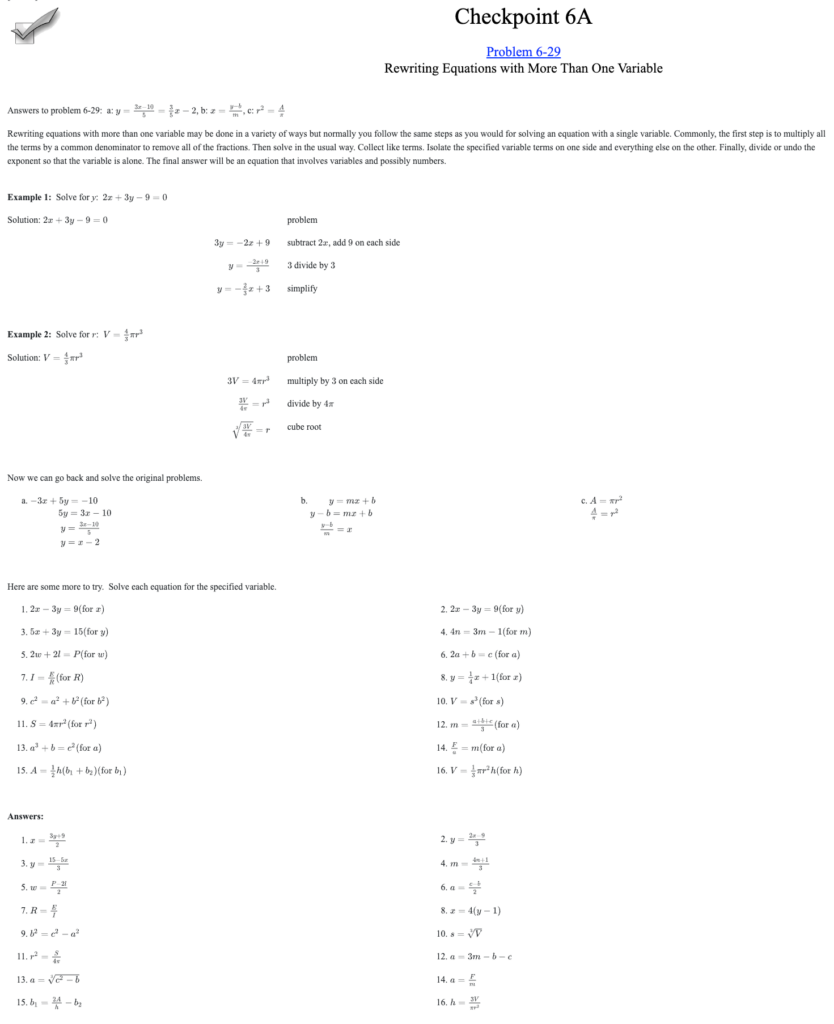Ilene Kanoff, South Strafford, VT, ikanoff@cpm.org
Let’s face it: most of us understand the value of our students having a growth mindset. In case you are not among those that see that value, check out any of the many websites dedicated to Carol Dweck’s research showing that through hard work and perseverance you can learn just about anything.
The question I ask is: What about the parents of our students—do they believe in growth mindset? Do they know how having a growth mindset can impact them and their children?
Last school year, I set out to reveal the benefits of having a growth mindset, not only to my students, but also to their parents. So, at our school’s Start the Year Right Night, I decided to forgo the usual “Here’s what we’ll be doing in math class this year,” for something different. Instead, I talked about growth mindset, had several articles and books available, and showed a video where Angela Duckworth talked about How parents might support grit in their children. It seemed parents were intrigued, but that was about it.
It was not until parent-teacher conferences in November that things started to gel … a bit.
During conferences I spoke about the importance of learning during math class. Also, I told parents that students who did not do well on an assessment should correct their mistakes, and retake the assessment (this was part of my work with a TRC group from last year). I gave parents copies of the test/quiz analysis form, on which students identified the types of mistakes they made and then corrected those mistakes. I encouraged parents to support their children in this process of correcting mistakes and re-taking assessments, thereby encouraging learning and understanding, not just performance on an assessment. Many took my advice.
Having parents support the practice of retakes is a far cry from what one parent said to me the previous year: “If my child fails the test so be it. She should not be allowed to retake the test. She should accept the grade and try harder the next time.” Fast forward to this year. At this year’s “Start the Year Right Night”, I have given up my plan from last year (talking about growth mindset) for the night. This time, I let parents know that we will be doing some math, the same math that their children might do in class.
I scan the crowd and notice a “deer in the headlights” look from many. I can almost hear, “Oh no! I’m not good at math. I’ll look like I’m stupid!” But this does not deter me. Instead, I present a visual math problem from Jo Boaler’s Week of Inspirational Math from last year (Week 2 on the youcubed.org website for grades 6-8).

After putting parents into teams, I project the image above briefly (about seven seconds) and ask parents to use graph paper and colored pencils to describe how they saw the dot pattern, and how they can tell how many dots are in the pattern without counting the dots. To my surprise, almost immediately parents start talking with their team. As I walk around, I overhear, “Oh, that’s interesting. I never would have thought about it that way,” and, “Let me show you what I did.” By the time all was said and done, we compiled eight different ways that parents saw the pattern, with me documenting their work.
“I loved how people showed different ways of thinking. In math, that isn’t how it always happens especially for parents who experienced math differently. The sharing was very important,” said the principal.
While still focusing on growth mindset in the classroom with students, I was wondering how I could continue the process with parents. It was not until our first student-led conferences in late October, that ideas for this came about. During the conference, students asked their parents to do some of the math they learned in class. This ran the gamut from visual math to paper cutting to graphing to algebra. Granted, the parents were not given as much time as the students might have had, but it was meant to give parents just a “taste” of what their children were doing in math.
Here is what two had to say:
- When given paper to fold and make one cut to create a square, a mother said, “I can’t do this.” Her child, mentioned that she should at least give it try. She did. When she was successful, she exclaimed, “I’m going to put this on my refrigerator alongside my kid’s work.”
- Upon watching her child use algebra tiles to solve an equation, one parent said, “I wish I had been shown how to do algebra this way. I might have liked math.”
Students then shared what they learned from having their parents work on math.
- “My mom was really proud of herself.”
- “It went well. It was neat to see from a different view (being the teacher, instead of a student), how the activity went. I liked to see that my parents struggled with the pattern. It really shows that there are many ways to think about how the pattern is growing.”
Continuing forward, I hope to work with both students and parents to help them “practice” growth mindset. My students seem to be way ahead of their parents, but if my limited experience shows anything it is that you can teach parents new (growth mindset) tricks.


